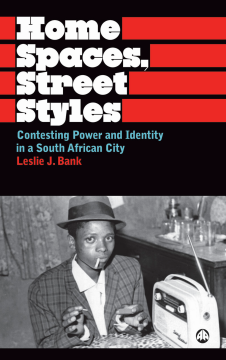
Additional Information
Book Details
Abstract
This book revisits the classic anthropology study - the Xhosa in Town series - based on research in the South African city of East London conducted during the 1950s.
The original studies revealed that there were two opposed responses to urbanisation in East London's African locations, one embracing Westernisation, European values and Christianity and another opposed to it. Leslie Bank returned to the areas of East London studied in the 1950s to assess how social and political changes have transformed these areas, in particular the apartheid reconstruction of the 1960s and 1970s and the struggle for liberation followed by the post-Apartheid period in the 1980s and 1990s.
Bank has added important theoretical insights to this rich ethnography, and forged strong links with issues that transcend the particularities of his urban study.
'This is a splendid work of scholarship which makes a major ethnographic contribution while advancing challenging theoretical arguments'
Professor James Ferguson, Department of Anthropology, Stanford University
'Leslie Bank's beautifully written re-study of the 'Xhosa in town' is a very powerful ethnography from post-apartheid South Africa and an important contribution to the anthropology of the city'
Professor Thomas Hylland Eriksen, University of Oslo
'Traces the multiple dimensions of how the social production of the urban creates a patchwork of disarticulated spaces in this South African landscape'
Professor Setha Low, Department of Anthropology, City University of New York
Table of Contents
| Section Title | Page | Action | Price |
|---|---|---|---|
| Bank.pdf | Cover | ||
| Cover | Cover | ||
| Contents | v | ||
| Illustrations | vi | ||
| Series Preface | vii | ||
| Preface and Acknowledgements | viii | ||
| 1. Towards an Anthropology of Urbanism | 1 | ||
| 2. The Xhosa in Town Revisited | 35 | ||
| 3. Modernism, Space and Identity | 60 | ||
| 4. Rebellion, Fractured Urbanism and the Fear of Fire | 89 | ||
| 5. The Style of the Comrades | 112 | ||
| 6. Changing Migrant Cultures | 138 | ||
| 7. Re-modelling the House: Gender and the Politics of Domestic Desire | 163 | ||
| 8. The Rhythms of the Yards | 190 | ||
| 9. Post-Apartheid Suburb or Hyper-Ghetto | 210 | ||
| Conclusion | 235 | ||
| Notes | 245 | ||
| Bibliography | 251 | ||
| Index | 264 |
